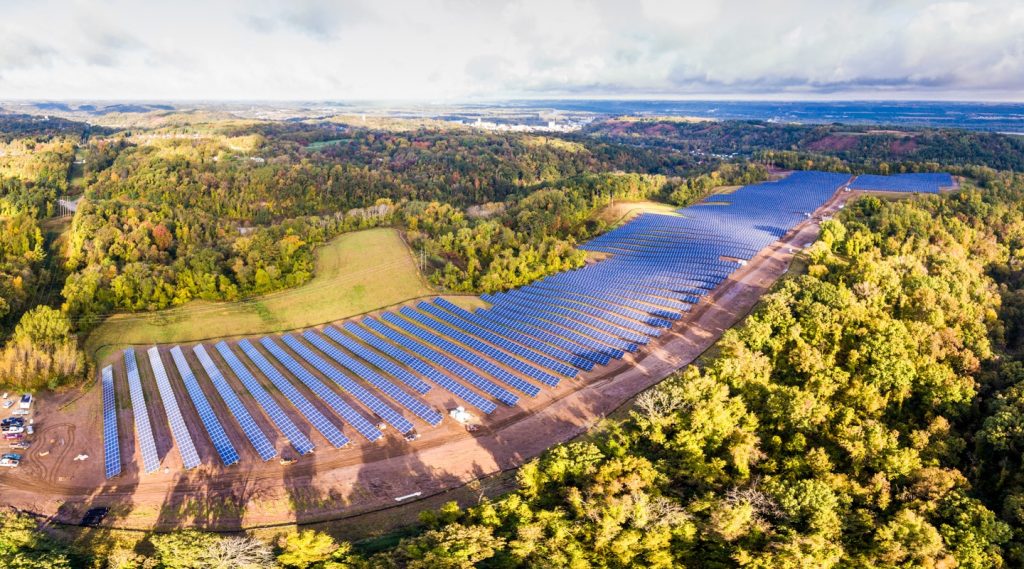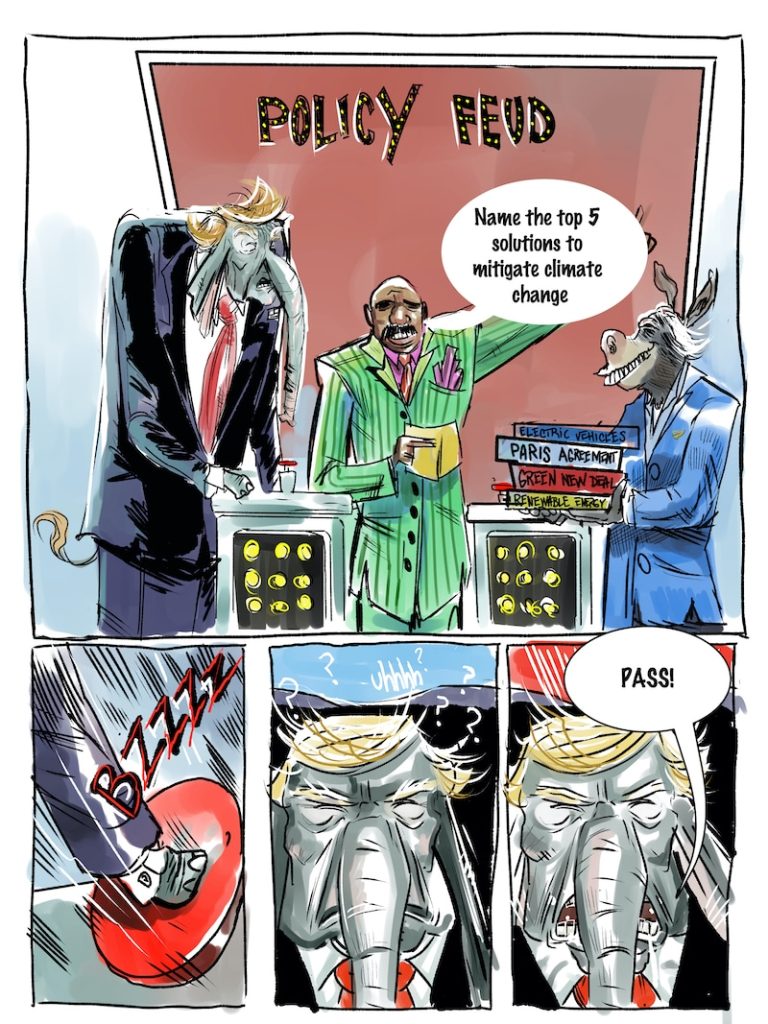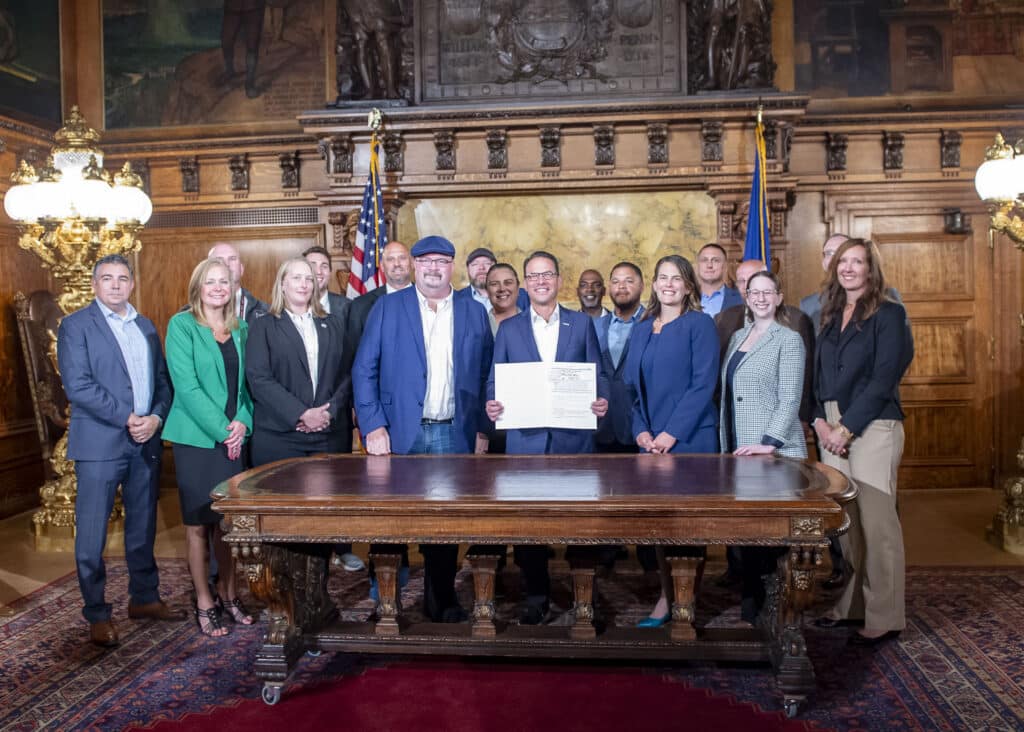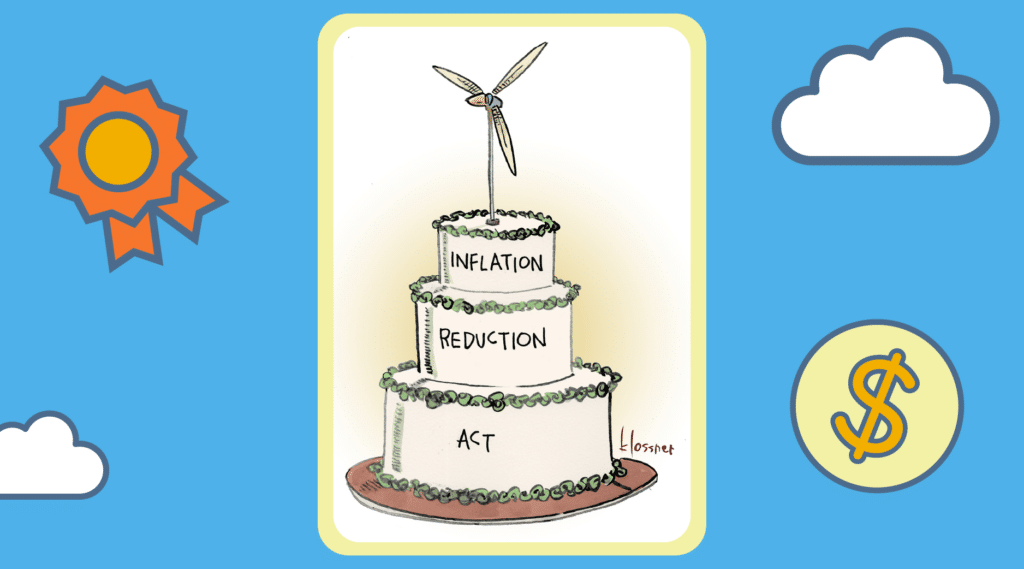Public support for climate action is at an all-time high in the U.S.: nearly two-thirds of Americans say the federal government should move more aggressively to restrict power plant emissions, require fuel-efficient cars, and tax corporate polluters. The good news is we’re closer to this goal than we’ve ever been. The bad news is, it all hinges on the November election. Two recent proposals, from Joe Biden’s presidential campaign and from top Congressional Democrats, lay the grounds for a national climate agenda that’s finally meeting the scale of the challenge.
Biden’s July climate plan is a key plank in his Build Back Better agenda, a broad economic recovery plan designed to create jobs and strengthen infrastructure while also tackling climate change. It calls for spending $2 trillion over four years to greatly increase the use of clean energy in the electricity, transportation, and building sectors, with an underlying emphasis on racial equity. The Congressional proposal, unveiled by House Speaker Nancy Pelosi and Rep. Kathy Castor (D-FL) in late June, is a detailed 538-page package that strives to “solve the climate crisis” through a combination of government mandates, tax incentives, and new infrastructure.
Both plans take advantage of our current chaotic moment to lay out an appealing alternative to the status quo—one that will boost, rather than undermine, the country’s long-term resilience. In a July speech, Biden noted that with the economy in crisis, we now have “an incredible opportunity not just to build back to where we were before, but better, stronger, more resilient.”

The two plans revolve around a few key areas:
- Reducing fossil fuels: A dominant solution in both plans is sharply reducing the use of fossil fuels, which in 2019 accounted for 63 percent of U.S. large-scale electricity generation. The Biden plan has an aggressive target to eliminate carbon emissions from the power sector by 2035 and to achieve net-zero emissions by 2050. The Congressional Dems similarly aim for zero greenhouse gas emissions (including carbon dioxide and methane) by 2050, with electric utilities becoming net-zero emitters by 2040. In both cases, massive investment in wind and solar power would occur, and the current clean energy tax credits would be extended.
- Infrastructure and jobs: Both of the climate proposals hinge on creating millions of jobs in the push to build more modern, climate-resilient infrastructure and a clean energy future. “When I think about climate change, the word I think of is ‘jobs’—good-paying union jobs,” Biden told supporters in July. In addition to building new wind and solar plants, Biden’s plan calls for upgrading 4 million buildings to meet the highest energy efficiency standards, and creating a net-zero emissions standard for all new commercial buildings by 2030.
- Mass transit and electric vehicles: To reduce emissions from the transport sector, Biden’s plan sets a goal to provide “quality public transportation” in cities that have over 100,000 people by 2030. The priority would be on mobility powered by electricity and clean fuels, with a requirement that all new U.S.-made buses be zero-emissions by 2030. He outlines a vision to “position America to be the global leader in the manufacture of electric vehicles and their input materials and parts.” Under the Congressional Dems plan, the federal government would double its investment in mass transit, expand the tax credit for electric vehicles, and mandate that automakers produce only electric cars by 2035.
- Supporting racial and climate justice: Importantly, Democratic leaders recognize the importance of equity in any discussions around a low-carbon future. Biden’s plan calls for infrastructure investments to address disparities in access to clean air and water and transportation, particularly for communities of color, with the goal for disadvantaged communities to receive 40 percent of all proposed clean energy and infrastructure benefits. It also calls for establishing an office of environmental and climate justice at the U.S. Justice Department.
The Reviews Are In
Neither of the proposals is as bold as the Green New Deal, but they’ve earned a “thumbs up” from groups like the Sunrise Movement that have long been skeptical of federal climate plans to date. The developers of the plans cast a wide net, consulting with climate experts, mayors and governors, union officials, the private sector, Native American tribes, and many others to win support. Gov. Jay Inslee of Washington, a progressive environmentalist who ran a climate-focused campaign for the Democratic presidential nomination, called Biden’s plan both visionary and comprehensive, observing, “This is not some sort of, ‘Let me just throw a bone to those who care about climate change.’”
Still, there are critics (and not just President Trump). Both climate plans leave room for continued generation from nuclear power, a controversial energy source that currently accounts for nearly 20 percent of U.S. electricity generation. Biden’s plan calls for creating a new climate research agency that would work on The proposals also promote other contentious solutions, including (in the case of the Dem’s plan) a carbon tax that would put a price on carbon and (in the case of Biden’s plan) the use of carbon capture and storage, which some critics consider to be a “false solution” to reducing fossil fuel emissions.
There’s also the tricky question of political viability. Biden’s proposal includes a Spending $2 trillion over a four-year period is no small potatoes (until one remembers the astronomical, horrifying costs of not taking bold, urgent action on climate). To cover the costs of his climate plan, Biden proposes, among other measures, increasing the corporate income tax rate to 28 percent (from 21 percent) and “asking the wealthiest Americans to pay their fair share.” For its part, the Congressional package may not be ambitious enough for the Dem’s left wing.
Even if Biden wins in November, it’s likely that few of the proposed climate measures will get enacted in their exact current form. But they still have tremendous value. In describing Biden’s plan, writer and activist Bill McKibben observed that the proposals are “a truly useful compendium of the mainstream and obvious ideas for an energy and conservation transition,” and that we need to keep up the pressure to make them a reality. “I think we’ve already reached the point where it’s clear that real change is finally coming….The crucial job of activists, then, is to always be demanding that we move faster.”
In the realm of politics, however, it’s not just up to “activists.” Every citizen with a vote and a voice has a role to play, both at the ballot box and afterwards, as we hold our elected officials accountable on their clean energy promises and push for the change we need to see.
Originally published in the 8/26/20 edition of our Flip the Script newsletter
















